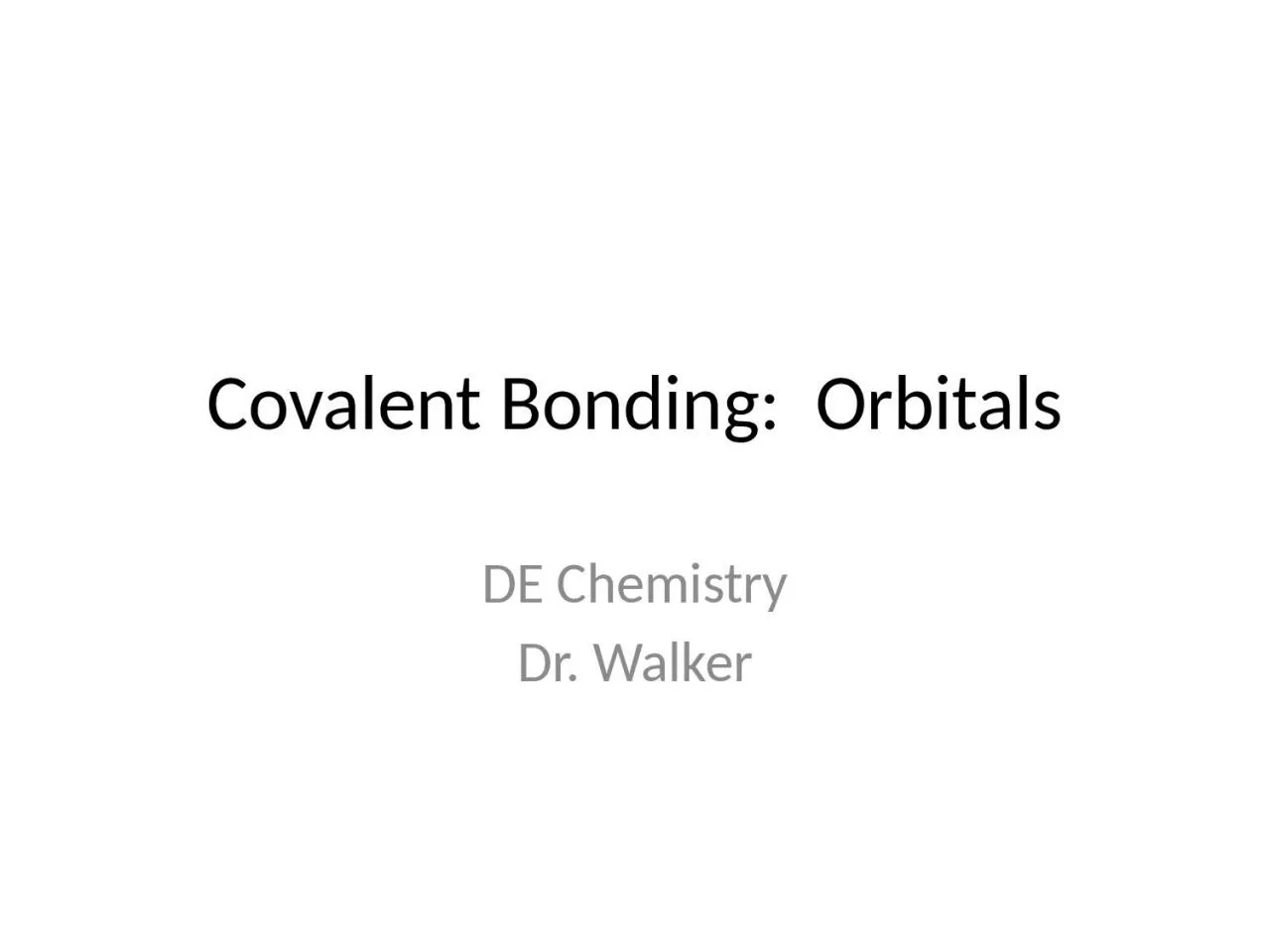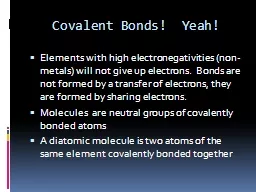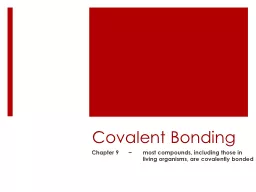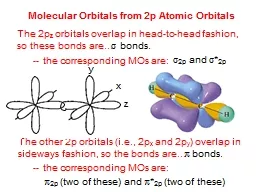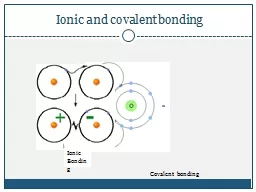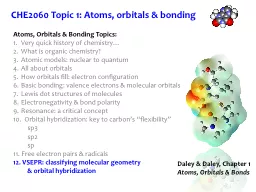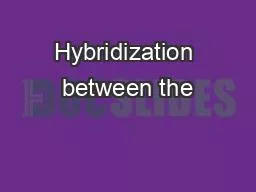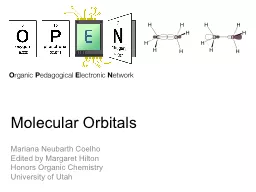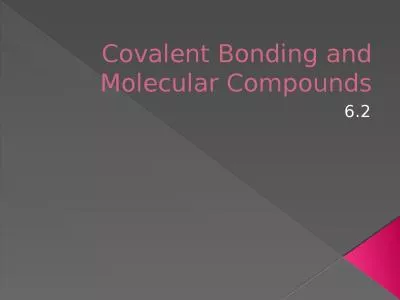PPT-Covalent Bonding: Orbitals
Author : queenie | Published Date : 2023-07-22
DE Chemistry Dr Walker Hybridization and the Localized Electron Model Hybridization The mixing of two or more atomic orbitals of similar energies on the same
Presentation Embed Code
Download Presentation
Download Presentation The PPT/PDF document "Covalent Bonding: Orbitals" is the property of its rightful owner. Permission is granted to download and print the materials on this website for personal, non-commercial use only, and to display it on your personal computer provided you do not modify the materials and that you retain all copyright notices contained in the materials. By downloading content from our website, you accept the terms of this agreement.
Covalent Bonding: Orbitals: Transcript
Download Rules Of Document
"Covalent Bonding: Orbitals"The content belongs to its owner. You may download and print it for personal use, without modification, and keep all copyright notices. By downloading, you agree to these terms.
Related Documents

